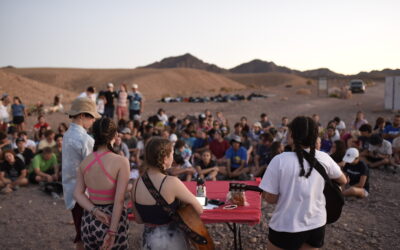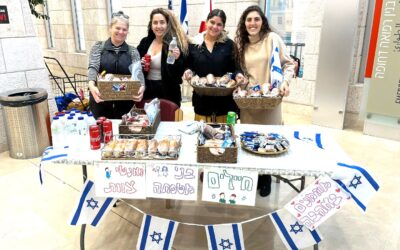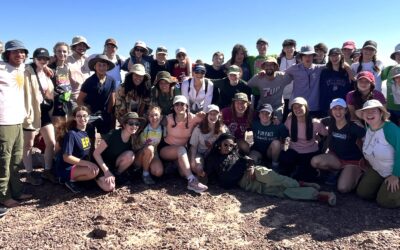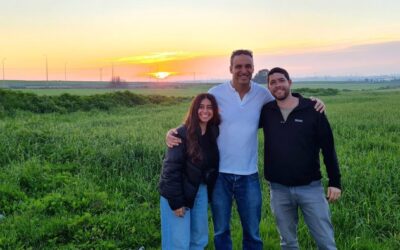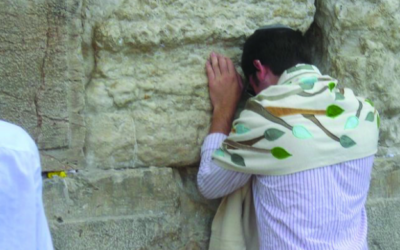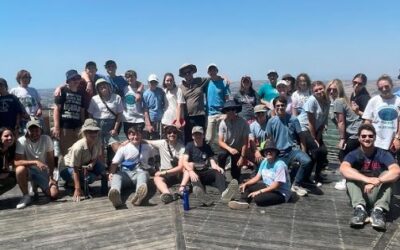By Alexa Coultoff, Bus 14
Being 6600 miles away or more from our homes in the United States, it’s been incredible to find familiarity in Jewish traditions here in Israel. For example, this week we traveled to the holy city of Tzfat in the North of Israel. Stepping off the bus, it appeared as a city out of a movie: cobblestone streets and shop windows that felt warm and secluded at the same time. Scents of slow burning candles and homemade goods filled the warm air. From first sight it seemed the polar opposite of my heavily populated and urbanized town in Florida. However, as we continued through the streets and into the Ashkenazi Ari Synagogue, I was able to spot symbols and tokens seen in most Jewish synagogues. An ark which held the Torah, siddurim that read recognizable Hebrew words, a side wall with a Yahrzeit counter, stars of David, and blue and white spread along the walls. Standing in such a different temple from what I’m used to, across the world, I felt a sense of belonging which was a truly amazing feeling. No matter how far I am from my legitimate home, it was at that moment I felt the sense of Jewish homeland that so many American Jews seek when they travel to Israel.
There was a plaque which explained the history of the temple just outside of the synagogue. Although initially built by Sephardic immigrants in the 1500s, the temple is now primarily attended by Ashkenazi Hassidic Jews from Europe, hence the “Ashkenazi Ari” title. Tzfat, we learned, is a city of tradition that built its Jewish community high above the land to practice Judaism safely and without fear of intrusion. Modern Tzfat has a large Hassidic community, whose Judaism looks quite different from reform practices. Despite our differences in sects of Judaism and the laws that go along with it, the basic purpose of a Jewish synagogue – to pray without judgement alongside a community – remains the same. Our denominations do not define us as Jews, but rather our love and passion for our Judaism.
After we toured the synagogue, we had time to explore the shops and enjoy a delicious meal of our choice. The high level of art in Tzfat sparked my interest as I strolled through galleries with high ceilings and steps leading up to rows of art of bright colors. The refreshing taste of the iced café that I have come to love sold to me by an enthused salesman of a shop was a lovely addition to my day in the city. The more time I spend traveling the streets of Israel, the easier it has become to adapt to the flow of things. What was at first completely foreign, has now become familiar and welcoming. Israel is a place that everyone can find comfort and holiness in, which is what makes it so special.

